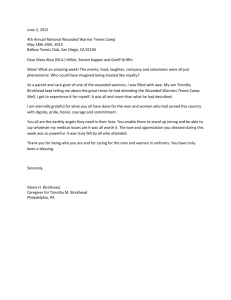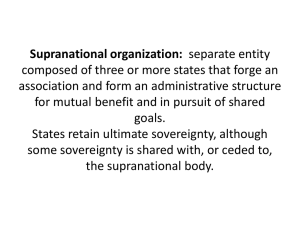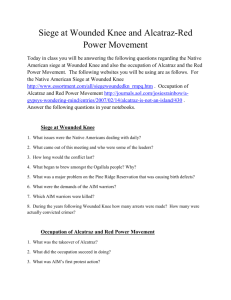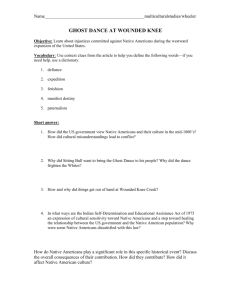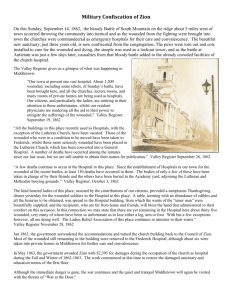Editorial Reports
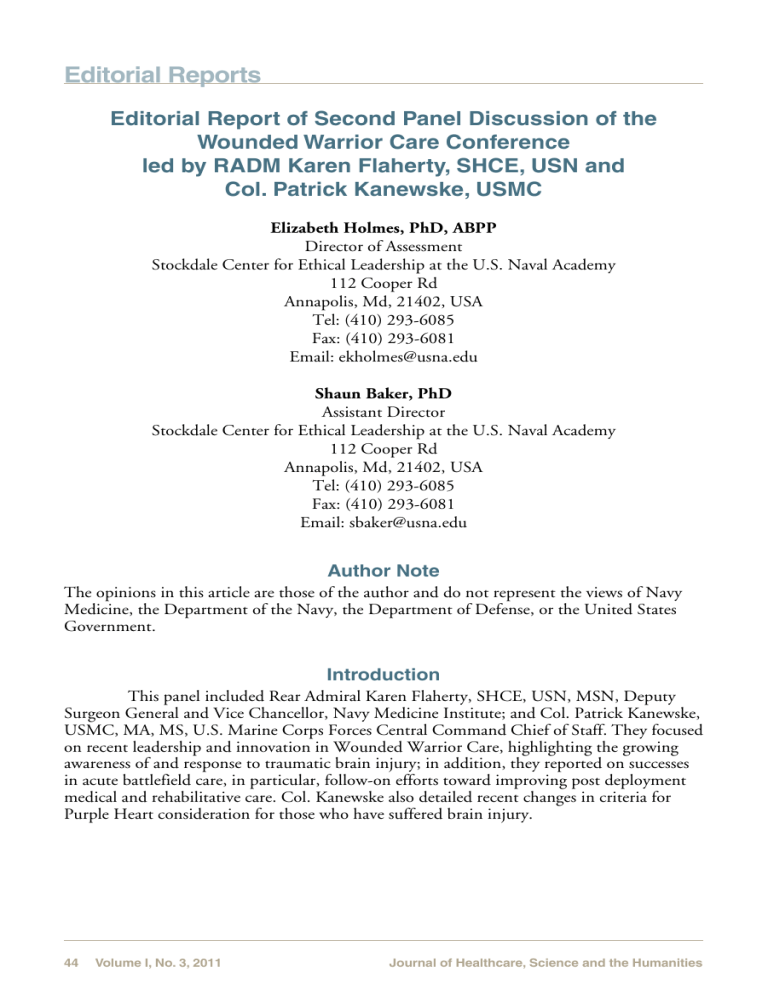
Editorial Reports
Editorial Report of Second Panel Discussion of the
Wounded Warrior Care Conference led by RADM Karen Flaherty, SHCE, USN and
Col. Patrick Kanewske, USMC
Elizabeth Holmes, PhD, ABPP
Director of Assessment
Stockdale Center for Ethical Leadership at the U.S. Naval Academy
112 Cooper Rd
Annapolis, Md, 21402, USA
Tel: (410) 293-6085
Fax: (410) 293-6081
Email: ekholmes@usna.edu
Shaun Baker, PhD
Assistant Director
Stockdale Center for Ethical Leadership at the U.S. Naval Academy
112 Cooper Rd
Annapolis, Md, 21402, USA
Tel: (410) 293-6085
Fax: (410) 293-6081
Email: sbaker@usna.edu
Author Note
The opinions in this article are those of the author and do not represent the views of Navy
Medicine, the Department of the Navy, the Department of Defense, or the United States
Government.
Introduction
This panel included Rear Admiral Karen Flaherty, SHCE, USN, MSN, Deputy
Surgeon General and Vice Chancellor, Navy Medicine Institute; and Col. Patrick Kanewske,
USMC, MA, MS, U.S. Marine Corps Forces Central Command Chief of Staff. They focused on recent leadership and innovation in Wounded Warrior Care, highlighting the growing awareness of and response to traumatic brain injury; in addition, they reported on successes in acute battlefield care, in particular, follow-on efforts toward improving post deployment medical and rehabilitative care. Col. Kanewske also detailed recent changes in criteria for
Purple Heart consideration for those who have suffered brain injury.
44 Volume I, No. 3, 2011 Journal of Healthcare, Science and the Humanities
Editorial Reports
Summary
RADM Flaherty opened by arguing that national leadership has a sacred trust to care for those injured while serving. Advances in medical technology and lessons learned in Iraq and Afghanistan have allowed us to attain battlefield survival rates up to 97–98%, rates unprecedented in history. We do exceptionally well providing acute care. She argued that this means we now have the opportunity, and the obligation, to focus energies on post-deployment rehabilitation. This need is made all the stronger by unique features of the present situation. Today’s wars are significantly different from those of previous generations in three primary respects: first, wars are longer and open-ended military operations (for example, we have been in Afghanistan for nearly 10 years); secondly, there is increased reliance on Individual Augmentees (Reserve Component); and thirdly, multiple deployments are common occurrences due to ongoing operations.
In light of these conditions, leadership has sought out younger active duty service members and patients, asking for detailed feedback about how to better serve them.
The response has revealed several challenges associated with the increased survival rates and extended tours. For instance, family members and parents are caring for their sons, daughters, spouses, and siblings—some even care for the caregiver. To better gauge needs of caregivers and family members, mobile agile care teams in Afghanistan regularly interview individual Navy and Naval reserve service members deployed with Marine and Army units.
The most important lessons these teams have learned are:
1. Tour lengths have significant impact on psychological health. Tours of 6 to 7 months are better than extended deployments.
2. Service members need more down-time in between deployments to rest and rebuild family ties.
3. Restoration centers have been set up in theatre, which have helped people return to duty. Sleep is a basic need that can be effectively supplied at such centers.
4. Alternative therapies are helpful and provide multiple opportunities for rehabilitation and resuscitation.
5. Caring for caregivers is vital. Compassion fatigue is inevitable.
6. Continuous innovation is important, with the focus on successful innovations both in theatre and in post-deployment environments. The search is ongoing for what is possible.
7. There must be a long-term commitment to openness and listening to all stakeholders.
RADM Flaherty also noted these challenges will not diminish as we move into the next 50 years. Wounded Warriors will continue to need our support. The above suggestions, along with continued surveys and innovation, will assure that we meet our ongoing commitments to those wounded in the service of the country.
Journal of Healthcare, Science and the Humanities Volume I, No. 3, 2011 45
Editorial Reports
Col. Kanewske followed up on the themes introduced by RADM Flaherty, highlighting rehabilitation and recovery programs the Marine Corps has introduced in theatre and at home. He began his remarks by noting changes in criteria for awarding of
Purple Hearts. These changes came about because of the prevalence in the Iraqi and Afghan theatres of concussive and traumatic brain injuries due to exposure to IED blasts.
He outlined the efforts of the 1st Marine Logistics Group (MLG) to build and staff a first of its kind “Concussion Restoration Care Center” at Camp Leatherneck, Afghanistan.
The 1st MLG, with the cooperation of the Bureau of Medicine and Surgery, deployed a specialized team from Camp Pendleton, California. It carries out a program of assessment and treatment of brain injuries, something that had not been provided before. The effort has been duplicated in other areas of Combined Joint Operations Area-Afghanistan.
Often, Marines ignore or downplay the effects of concussions, and wanting to return to the fight, do not wait until they are fully healed. Centers not only educate Marines about concussions, but also provide necessary time to heal under expert guidance. Guidelines are in place for observation of concussions. Any Marine within 50 feet of a blast is monitored for 24 hours. If symptoms persist, monitoring is increased until the Marine is back to normal. Approximately 500 Marines a month are seen at such centers in Afghanistan.
The Marine Corps also has instituted the highly successful Wounded Warrior
Regiment. This is a nationwide organization headquartered in Quantico, Virginia, which provides extensive non-medical rehabilitative care and support for wounded and injured active, reserve, and veteran Marines. The Regiment assists them as they either return to duty or transition to civilian life. The regimental headquarters commands two battalions located at
Camp Pendleton, California and Camp Lejeune, North Carolina, and multiple detachments in locations around the globe. Among the services provided: athletic reconditioning; pastoral care; a 24/7 call center that conducts outreach and fields calls for assistance; job transition services; district ‘injured support’ cells; family support; and stewarding through the Disability
Evaluation System (DES).
Additionally, Col. Kanewske highlighted the Veterans Administration’s Polytrauma
System of Care (PSC), which includes primary centers in Tampa, Florida; Richmond,
Virginia; Minneapolis, Minnesota; and Palo Alto, California, along with associated network sites across the nation. This system provides intensive rehabilitation services for veterans and service members who have suffered severe injuries to more than one system of the body.
These usually include brain injuries. The centers also provide extensive training and support for caregivers and families. Col. Kanewske reported that the record of success is exemplary.
Other successful programs mentioned by Col. Kanewske are Hunters for Heroes and Vet Connect. The Hunters for Heroes program, a non-profit 501(c) 4, provides hunting and other outdoor activities to servicemen and veterans who have been wounded serving in
Afghanistan and Iraq. It is based in Columbus, Georgia. Enable America launched the Vet
Connect program, also a non-profit. Vet Connect supports the Department of Defense, the
Department of Veterans Affairs, and the many other private organizations that address the needs of Wounded Warriors through programs that help them adapt to everyday routines with their disabilities, enable them to further their education or vocational training. Vet
Connect engages in community outreach activities and resources network development
46 Volume I, No. 3, 2011 Journal of Healthcare, Science and the Humanities
Editorial Reports designed to provide Wounded Warriors and their families with access to employment opportunities and reintegration into civilian life. Since 2007, more than two hundred
Wounded Warriors and their families have been served by Vet Connect mentors across the country. Vet Connect improves the recovery of Wounded Warriors by pairing them with similarly wounded peer mentors who have gone before them in the recovery process. The key to the program’s success are the veterans who work with the Wounded Warriors one on one.
It is based in Tampa, Florida.
Reflection
The services outlined by both speakers remind us that care of our Wounded
Warriors is not only a matter of obligation for various agencies of the U.S. government, but something many individuals and organizations see as a sacred obligation of citizens who have benefited from the sacrifices of these courageous individuals. Programs like Hunters for Heroes, Enable America’s Vet Connect, and the Veterans Affairs’ Polytrauma System of
Care show the promise and synergy of partnerships between the United States government, medical professionals and private individuals. These partnerships are a promising source of the long term holistic care and rehabilitation that is envisioned as essential in the coming half century, and was so ably noted in RADM Flaherty’s presentation.
Historically, medical care has tended to be top-down; in other words, the concepts for treatment were imposed by professionals onto patients. Leadership science, and other disciplines such as anthropology and psychology, teach us that important new ideas are best communicated in two ways—not only from the top down but also from below and within the community. The communication process is not an either/or but rather a both/and. It is notable that both of the panelists at the conference stressed the importance of getting feedback and involvement from both patients and their family caregivers. Institutions and professions traditionally communicate their new ideas via their leaders, but this has no real meaning unless those ideas have arisen from the society they serve in the first place.
In the healthcare profession, new ideas about treatment, if they are isolated from the realities of human experience, can become authoritarian. On the other hand, without rigor and structure, basing treatment on human experience alone can lead to ambiguity and ineffectiveness.
Care for Wounded Warriors today calls for innovative ideas coupled with the ability of healthcare professionals to learn humbly and to enter into the experiences of both
Wounded Warriors and their caregivers. Healthcare professionals cannot be just technicians in these cases, prescribing a top-down solution and merely dispensing medication. They must be present to the pain of others to be effective healers.
If we are to move beyond the traditional top-down approach to medical care, how do we go about teaching our healthcare professionals to be these kinds of healers? While listening to the presentations, it occurred to one of the authors that there is a relative dearth of materials that aid in the education of medical professionals and military personnel in the moral and emotional challenges involved in the short and long term care of Wounded Warriors. This is something that could be profitably addressed through the auspices of the Stockdale Center for
Ethical Leadership, the institution at which both authors are privileged to serve.
Journal of Healthcare, Science and the Humanities Volume I, No. 3, 2011 47
Editorial Reports
The Center is housed at the United States Naval Academy. Through research and consultation, the Center identifies and studies important emerging issues in ethical leadership, and assists leaders in tackling these complex issues. The Center develops new ways to strengthen and accelerate ethical leadership development, and disseminates its learning and innovations via conferences, lectures, print and e-publication, as well as multi-media case studies. All of these are made available to the fleet and the wider world via the Stockdale
Center website and social media. Center personnel also travel the world connecting with people, programs, and sharing experiences. Through these efforts and our broad reach and impact, the Stockdale Center works toward achievement of a bold vision: Transforming ethical leadership development worldwide.
After attending the panel, the authors realized some of the educational possibilities with regard to Wounded Warrior Care. The Stockdale Center has created interactive films or ‘ethics simulators’ as well as two electronic volumes of case studies, all of which come with an extensive facilitator guide and which are also made freely available for Navy and others. These are tailored to be discussion facilitators, allowing a robust jumping off point for seminar, ward-room, and similar environments.
The Center has produced seven interactive live-action ethical decision making simulations in partnership with WILL Interactive Inc., thanks to the generous funding developed from the U.S. Naval Academy Foundation. Participants in the computer-based simulations are immersed in realistic environments that allow them to enter into the experience of others, so that they can learn empathy while also applying practical tools to resolve dilemmas. The learning approach is both bottom-up and top-down. Participants face situations with significant moral and ethical dimensions, and they have to make hard choices. Because the simulations are interactive, every choice made leads the narratives in different directions and brings with it the ramifications and consequences of that choice.
The decisions made affect the ultimate outcomes.
In addition to putting participants in someone else’s world and thus teaching empathy, the simulations come with a step-by-step tool that walks participants through a decision-making process, going from moral awareness through moral action. Learning to apply an ethical leadership the decision-making model assists students in developing the moral “muscle memory” that will be required in high-stress, morally ambiguous situations.
Difficult ethical decision-making becomes easier when it is built on a foundation of ongoing practice. Becoming present to the needs of others and learning to walk the steps from moral awareness to action are indispensable skills for ethical leaders. The simulations help develop this muscle memory, especially when paired with the opportunity to apply the ethical decision-making model to many cases.
These computer simulations, possibly paired with interactive simulations, could form the core of an effective educational and training module for medical personnel in the Navy and other branches of the armed forces. It is with this in mind that the authors invite readers to visit the Stockdale Center website, peruse these products, and submit prospective cases involving
Wounded Warrior Care. That will certainly advance the discussion even as we are witnessing the impressive advancements in care that were so well described by our two panelists.
48 Volume I, No. 3, 2011 Journal of Healthcare, Science and the Humanities
Editorial Reports
References
For more on the programs mentioned in this report, please see the following websites:
Concussion specialists provide front-line care, Marine Corps Times, retrieved 5-17-2011 from http://www.marinecorpstimes.com/news/2010/09/marine-concussion-afghanistantreatment-091410w/.
USMC Wounded Warrior Regiment, retrieved 5-17-2011 from http://www.woundedwarriorregiment.org/index.cfm.
United States Department of Veterans Affairs Polytrauma Centers, retrieved 5-17-2011 from http://www.polytrauma.va.gov/.
Hunters for Heroes Facebook page, retrieved 5-17-2011 from https://www.facebook.com/pages/Hunters-for-HeroesInc/147167995344753.
Enable America Vet Connect, retrieved 5-17-2011 from http://www.enableamerica.org/programs-vetconnect.html.
Stockdale Center for Ethical Leadership, retrieved 6-23-2011 from http://www.usna.edu/ethics.
Journal of Healthcare, Science and the Humanities Volume I, No. 3, 2011 49
